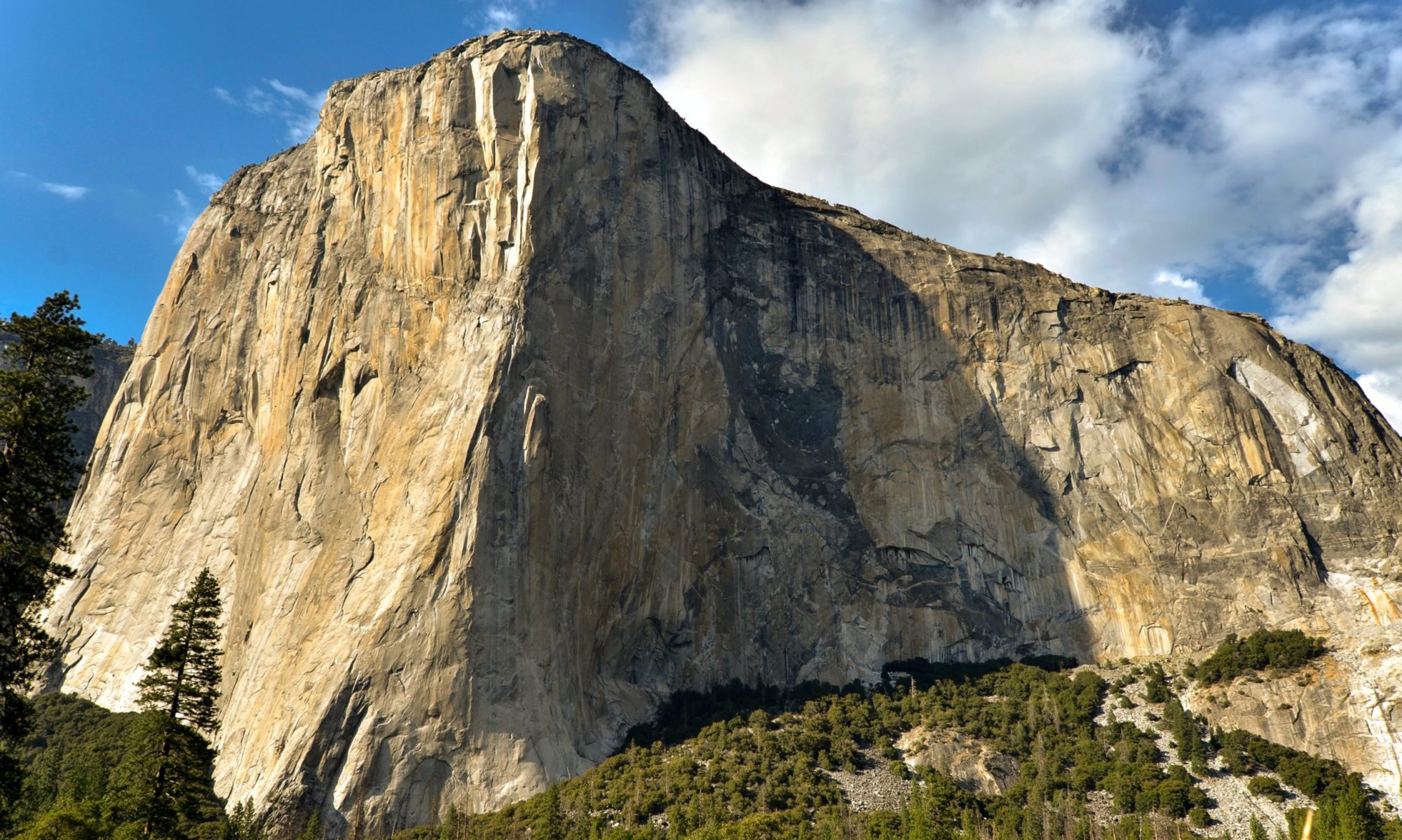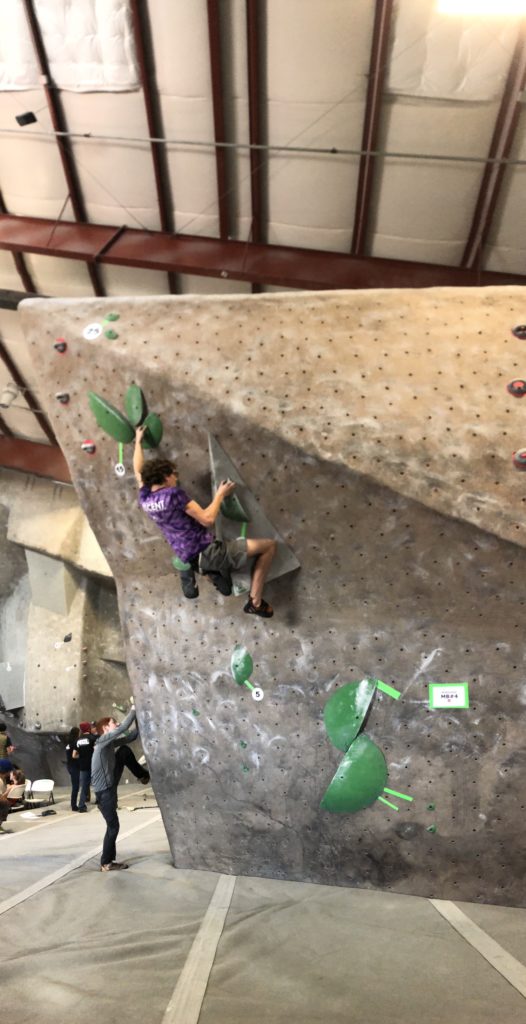
Teen athletes need a lot of calories!
If you’ve got teens, you know they can eat a lot. Like, you need the Executive Membership at Costco just to keep up. (Yes, I go to Costco weekly!)
My 16-year-old son has been climbing since age 11. We’ve had some experience with fueling for climbing after school days, snacks for all-day comps, and fueling for a growing body.
In my own research, I studied climbers aged 11-17 to learn what they ate, if it matched their estimated nutrition needs, their weight and height, their training load, and if that correlated with climbing ability.
The results were a bit concerning. Eighty-two percent of my cohort were not eating enough calories to account for the additional energy demands of exercise. This was likely unintentional, as only one of them scored “at risk” for disordered eating when using a validated research questionnaire. These kids were calorie deficient.
Nutrient and energy demands during teenage years are sometimes the highest they will ever be. Proper nutrition will ensure teens grow to their fullest potential. Low protein intake, for example, is linked to reduced growth and lean body mass. Active teens need even more than their sedentary peers to support daily activities, exercise and rapid growth.
What should teenage climbers eat?
During the teen years, young people are more influenced by their peers than their parents. Trends show teenagers often snack more on energy-dense, rather than nutrient dense food. Twenty one percent of teen’s energy comes from sugar sweetened sources like carbonated drinks. Teenage climbers need to ensure they are eating adequate carbohydrates and protein to excel in climbing and support rapid growth.
How much protein should a climber eat?
Adequate protein intake supports muscle growth and development. Teen climbers should aim to have a protein-rich snack containing 20-25 grams of protein within an hour after climbing or training to support muscle growth and recovery.
A study on the nutrition of teenage climbers found that protein was the one nutrient category teenagers were sufficient in. Your teen is likely eating enough protein to support their growth and exercise demands. A general rule of thumb is 1.6 grams of protein per kilogram of body weight.
How many carbohydrates should a climber eat?
Teens should aim for 30-60 grams of carbohydrates per hour during active climbing. This will ensure the body’s glycogen stores are full and able to produce energy for the muscles to use. Studies show many teens are lacking in fiber. When it comes to carbohydrates the focus needs to be on fiber-rich, whole grain carbohydrates, but only AFTER a training session, so it doesn’t sit like a rock in your stomach while climbing.
Teens should use gym or training sessions to experiment with the forms of carbohydrates that sit best in their stomachs. Try using quickly-digesting carbs such as white bagel, pretzels, fruit snacks, sports gummies, sports drink, or animal crackers.
My cohort of adolescent climbers under-ate their estimated carbohydrate intake. What’s more, even with increased training hours per week, their carbohydrate intake remained flat. This means they weren’t eating more to fuel and match the training sessions they were doing. While this was a small study, it does give us some insight into how adolescent climbers eat.
What other vitamins and minerals are important for an active teen?
Teenagers and pregnant women have something in common. They are calcium positive. This means teens and mothers-to-be are absorbing more calcium than is used by the body at a given time. Teenagers need to take advantage of this by consuming at least 1300 mg of calcium per day to encourage maximal bone density.
The teen years are a critical time to build up bone density. Teens build up bone density until around age 20–after that it starts declining. Calcium and adequate overall calories are critical to maximize bone density. Weight bearing exercise is also great for building up bone strength.
Vitamin D is essential for calcium absorption. There are few food sources for Vitamin D, but 15 minutes in direct sunlight will help ensure adequate intake of this super vitamin. Fatty fish is one of the better sources of Vitamin D from the diet.
Iron needs increase during adolescence because of the rapid growth that takes place during this phase of development. Iron is crucial for building red blood cells. Add citrus to vegetables to aid in the absorption of iron from non-meat sources.
How can parents help their teenage climber?
Never, never, never comment on weight gain, unless you are guided by a pediatrician under certain circumstances such as eating disorder recovery. It’s normal for girls to gain around 40 pounds during puberty, and also put on more fat mass. A parent or coach may see this and think the kid is getting “fluffy,” but really it’s actually a very healthy and normal growth pattern. Both boys and girls have significant changes in their bodies. Coach and teammate comments about body size and/or food choices can easily trigger an eating disorder.
Coaches should refrain from commenting on weight or food choices. If you are truly concerned, you can approach the parent (not the climber) in a neutral way. Ask them if they’ve noticed any changes in meal patterns, energy levels, mood, etc. If both the coach and the parent are concerned, refer the climber to a sports dietitian and pediatrician.
Teenagers eat based on what is convenient and available. Help your child by teaching them how to prepare nutrient dense snacks in advance that are easy to grab and go.
Pack a variety of vitamins and minerals into hand held snacks that will aid in the development of your growing teen. Some quick to prepare ideas include:
- Burrito: whole grain tortilla, avocado, meat (or beans for vegans), tomato, lettuce, cheese
- Grain Bowl: quinoa, rice or other grain, beans, salsa, vegetables, protein (tofu or meat)
- Sandwich: bagel or whole grain bread, cucumber, tomato, avocado, sprouts, cream cheese
Download our free climbing fueling guides for more ideas! Teens are in a unique stage of development. They need calorie rich meals and snacks to support physical activity and unprecedented growth. Statistically speaking, teens eat what is convenient and available to them. Help them nourish their bodies by having nutrient dense options available to grab and go before an after school training session or weekend climbing trip.
This article written by Marisa Michael and Kaila Dickey.
References
Judith Brown’s Nutrition Through the Lifecycle
Desbrow B, Burke LM, Cox GR, Fallon K, Hislop M, Leveritt M. Sports dietitians Australia position statement: sports nutrition for the adolescent athlete. Int J Sports Nutr Exerc Metab. (2014) 24:570–84. doi: 10.1123/ijsnem.2014-0031
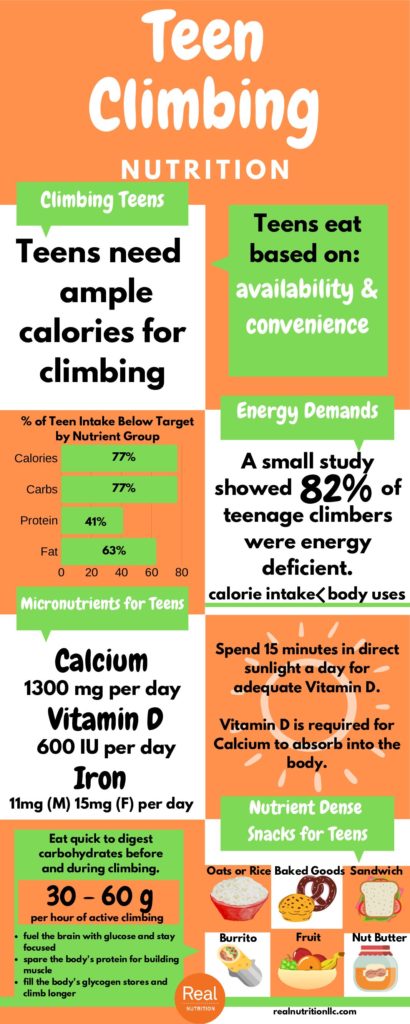
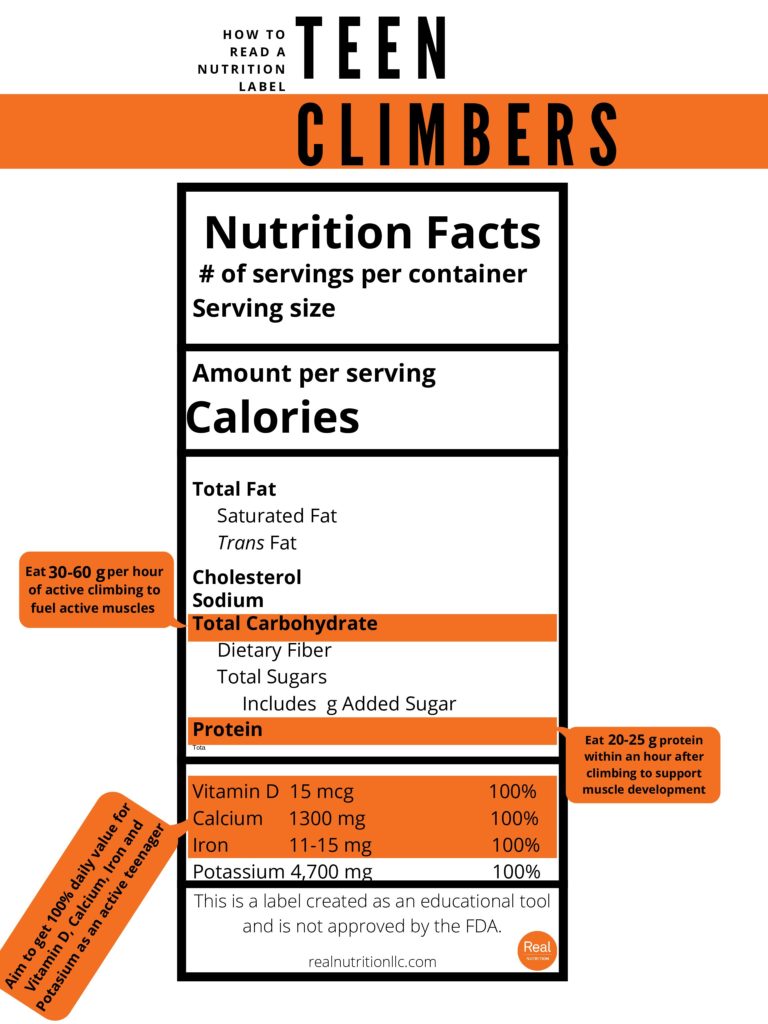
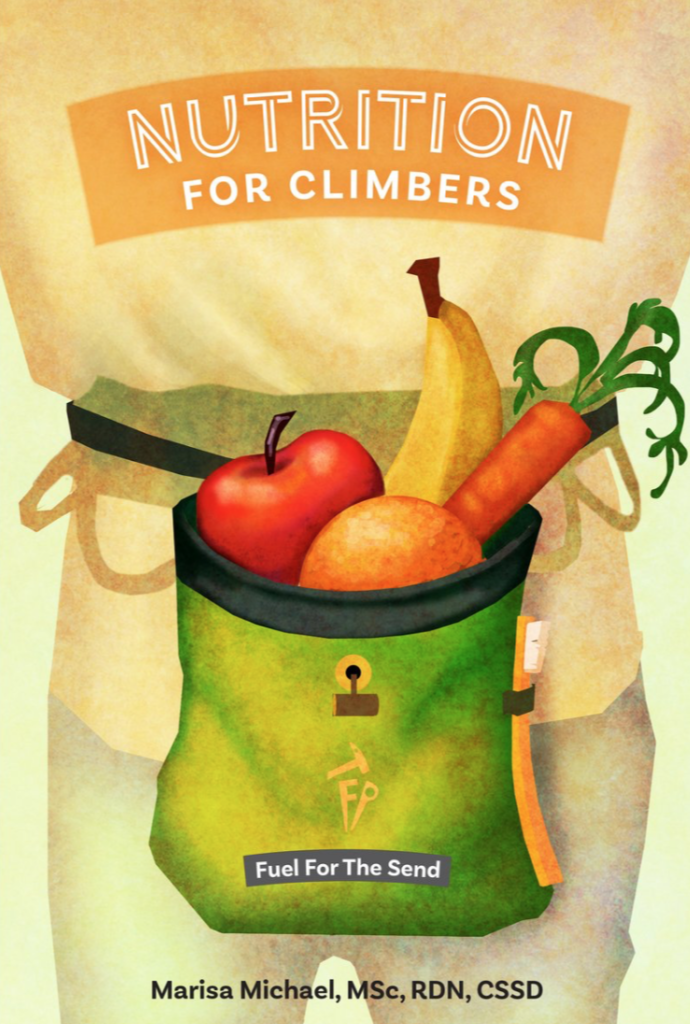
Learn more nutrition to crush your climbing in the book Nutrition for Climbers: Fuel for the Send
